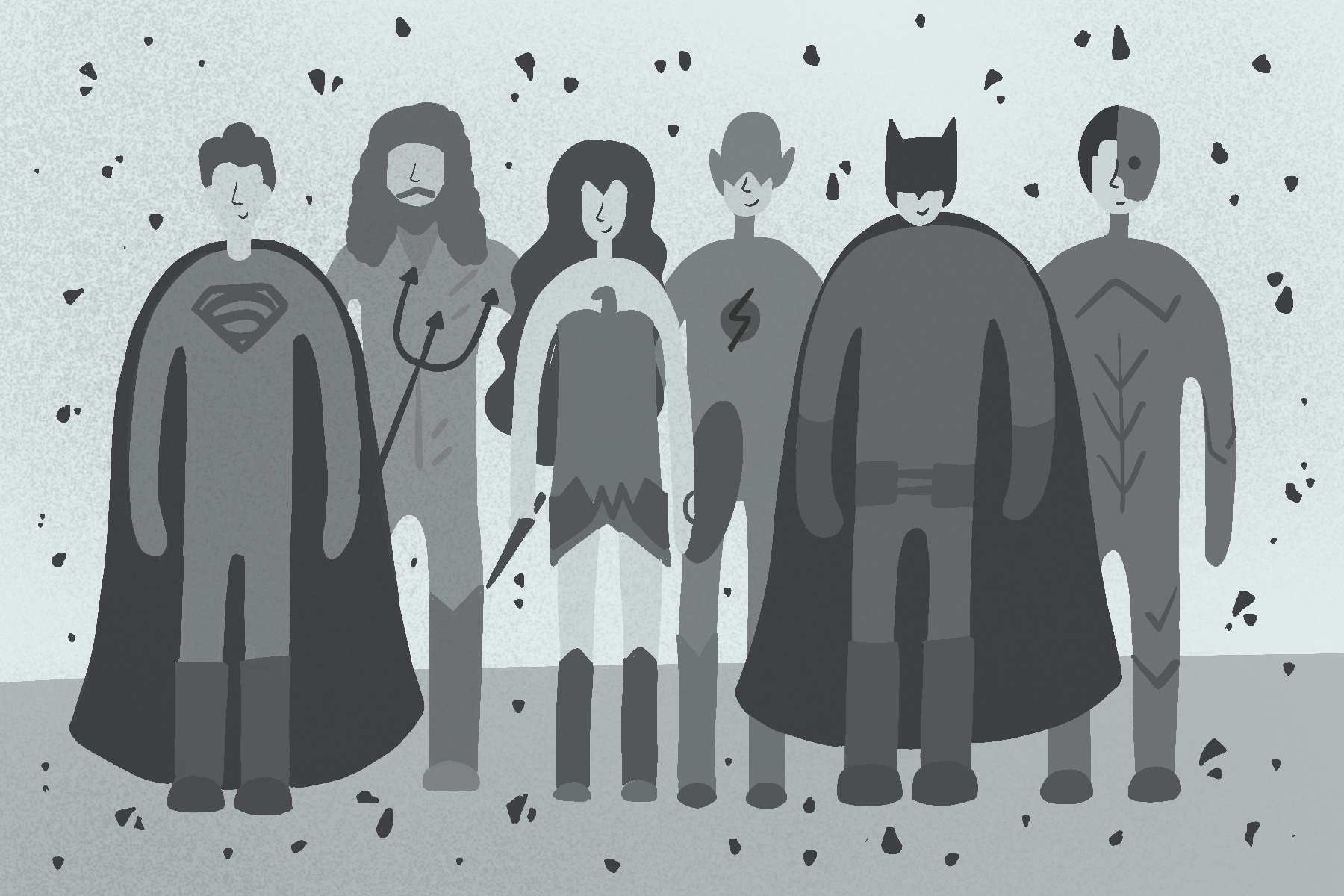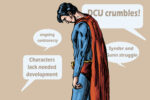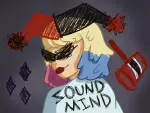After much fanfare and online campaigning for its release, on March 18, “Zack Snyder’s Justice League” was finally made available on HBO Max. With the amount of criticism levied at the original theatrical cut, it’s no wonder that many moviegoers remain skeptical toward what some may see as a glorified four-hour director’s cut. However, its runtime is indicative of just how much meat was left on the Justice League bone the first time around.
While even the most casual moviegoers are well-versed in Marvel lore at this point, the same can’t really be said for the DCEU’s mess of a cinematic universe. Unfortunately, Warner Bros. hasn’t been as successful in cranking out hit after hit the way Marvel has with films like “Iron Man,” “Thor” and “Captain America: The First Avenger.” Each of those films established the titular hero’s backstory and motivations that eventually led to the wildly successful Avengers trilogy.
This left the DCEU and Warner Bros. struggling to play catchup. Instead of going the Marvel route, they decided to rush into creating a Justice League film based on the “Man of Steel” and “Batman v Superman” movies. However, both of these films received mixed reviews, with the latter being maligned by fans and critics alike. To make matters worse, Snyder was now tasked with jamming the rest of the Justice League heroes into a film that was limited to a two-hour runtime.
With these factors in mind, it makes a bit more sense that Snyder’s version of the film greatly benefits from an extended runtime. To answer the question on everyone’s mind: Yes, without question, the “Snyder Cut” is significantly better than the theatrical cut. While not every minute of those four hours is essential to the film’s story, the two additional hours allow the characters to develop in a way that was sorely needed in the 2017 release.
The film is divided into six narrative acts and an epilogue. This is a great decision by Snyder, as it allows for viewers to pace themselves and makes the movie feel like an epic novel. Anyone that’s apprehensive about diving into a movie of this length can simply view it as a mini-series by taking breaks between acts at their own choosing. By streaming on HBO Max, it’s not nearly as tough to watch a four-hour movie as it would be in theaters. The convenience of hitting the pause button while getting up to get a drink or use the restroom makes for a pleasant viewing experience for even the most small-bladdered among us.
As far as the actual content goes, the film makes great use of the runtime by giving characters who were neglected in the 2017 release much more backstory and motivation. This rings especially true with Cyborg, who plays an important role in the film’s overarching story, yet was treated as an afterthought in the 2017 version. In the “Snyder Cut,” Cyborg’s tragic origin story is fleshed out, making him a character that viewers can connect and empathize with. One has to wonder what the studio was thinking by leaving out pivotal scenes that helped the plot make sense.
Speaking of things making more sense, anyone who was confused by the Mother Boxes in the 2017 version will likely be less mystified this time around. In the original release, Batman learns of the Mother Boxes by analyzing the blood splatter of a dead Parademon. The “Snyder Cut” provides extra footage and exposition that provides much-needed context to these objects that were essentially a deus ex machina in the theatrical cut.
Batman himself sees much-needed improvement in the “Snyder Cut.” Many of the jokes he makes in the 2017 version that fell flat and came across as out of character for the Dark Knight have been removed. Additionally, his motivation for bringing the Justice League together is much more realized as he clearly expresses remorse over Superman’s death and seeks to redeem himself this time around by building a team to take on an impending threat.
The Flash is similarly improved in the “Snyder Cut.” The iconic speedster still provides some much-needed levity to the film, but many of the over-the-top jokes and rants about brunch have been replaced with humor that actually works. There are also additional scenes early in the film that, like with Cyborg, add some character development that was lacking in the original release. The extra screen time his character gets allows the viewer to empathize with him much more effectively. Scenes such as visiting his dad in prison and saving a girl from a car accident are excellent additions that add depth and humor not found in the 2017 release.
While some may argue that the car crash scene is unnecessary, it does well to improve upon the previous portrayal of the Flash. He ends up playing a pivotal role in the film’s climax that was completely left out of the 2017 cut, making for a more exciting conclusion to the final battle.
Aquaman also has some additional appearances, although to a lesser extent than the Flash and Cyborg. The most significant change seen to his character in the “Snyder Cut” is his relationship with the other Justice League members. He’s portrayed as more of a team player in this version, connecting with the other heroes in a genuine way. The awkward scene in which he unknowingly sits on Wonder Woman’s lasso and rambles on about how beautiful she is was smartly removed.
Thankfully, Superman’s role in the film is without the infamous CGI upper lip that was widely mocked in the 2017 cut. At the time, Henry Cavill was contractually obligated to have a mustache for his role in “Mission: Impossible — Fallout” during the reshoots for “Justice League,” leaving effects artists with the unfortunate task of digitally removing it for his role as Superman. This resulted in several intentionally hilarious close-ups that did little for a film already plagued with production issues.
The “Snyder Cut” fixes this problem and actually improves on Superman’s appearance by having him appear in an all-black suit as opposed to his traditional red and blue color scheme. The new suit is a welcome change that functions as a tribute to the suits worn by his family on Krypton.
Wonder Woman’s character is the least altered in the “Snyder Cut.” She does have some additional scenes, but her role in the film is mostly the same. However, the sequence where Steppenwolf steals the Mother Box from the Amazons is greatly extended for the better. The fight to protect the Mother Box turns into an incredible horseback relay race between the Amazons, and although they ultimately fail to escape Steppenwolf, the scene is a welcome and exciting addition to the film.
As for the antagonist, Steppenwolf’s appearance is incredibly different in the “Snyder Cut” than it was in the 2017 “Justice League” movie. He’s given an organic metallic armor that makes him much more intimidating. The way his armor clinks and flexes when he’s angry adds so much to a character who was treated as a joke in the 2017 release.
It’s not all sunshine and rainbows for the “Snyder Cut,” though. Unfortunately, the film still suffers from moments of stiff delivery and corny one-liners. Additionally, with an alarming 24 minutes and 7 seconds of slow-motion footage, audiences were left staring at their computer screens for a bit longer than absolutely necessary.
Alongside the slow-motion footage, while the film’s soundtrack has been praised by some, there are many instances where it seems over the top and repetitive, especially the Wonder Woman theme that plays nearly every time she has an action sequence.
Ultimately, the film is a major improvement over the theatrical release, but it’s still not without its flaws. The whopping four-hour runtime could feasibly be cut down by 30 minutes with the removal of some unnecessary scenes and overused slow-motion effects. Also, the film’s desaturated look can be off-putting to some; however, it may appeal to others depending on preference.
Most viewers who were disappointed with the original cut will be largely satisfied with this version of the film. However, for people who aren’t fans of the superhero genre or Snyder films in general, this movie will do little to change their minds. It’s evident that this extended cut is a heartfelt gift to fans who relentlessly campaigned for its release, and while the movie sets up sequels that may never be realized, the influence of a dedicated fanbase is something to be admired.
















